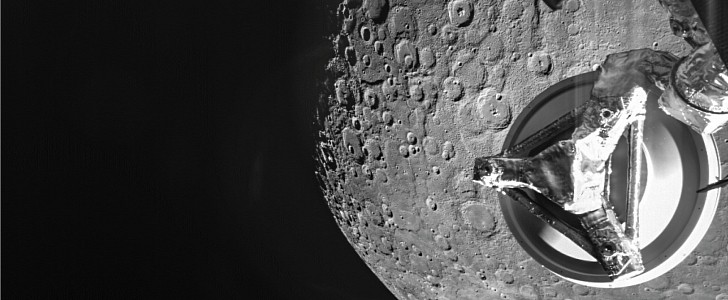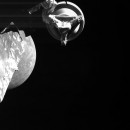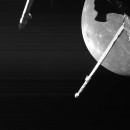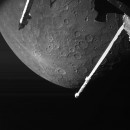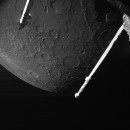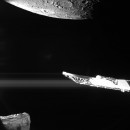The BepiColombo spacecraft recently completed its second flyby of the closest planet to our star. On June 23rd, BepiColombo had an encounter with Mercury, and it managed to snap incredible close-up images of its surface.
The spacecraft, which is a joint project by the European Space Agency (ESA) and the Japan Aerospace Exploration Agency (JAXA), made its closest approach at 09:44 UTC. BepiColombo hovered at 200 km (124 miles) above the planet's surface. During the flyby, it managed to take up to 56 pictures of the planet with the help of its three monitoring cameras (MCAM).
Because MCAM-2 and MCAM-3, which provide black-and-white snapshots, are located on opposite sides of the spacecraft, the final sequence of images shows a combination of the two perspectives. This allows us to see a great percentage of the planet as Bepicolombo is leaving it behind.
But those weren't the only spectacular pictures sent by the spacecraft. As it passed near its surface, it observed the numerous craters illuminated by sunlight. Currently, BepiColombo is in a "stacked" cruise configuration. This prevents most of its instruments from being fully operated during the flybys. However, it doesn't mean that they don't pick up valuable information as the spacecraft is steering closer toward Mercury.
Several geological features that BepiColombo will explore in greater detail while in orbit were examined. The surface is riddled with impact craters, but the planet also has plenty of cliff-like formations that probably resulted from the action of plate tectonic forces.
During its encounter, BepiColombo also spotted for the first time one of the largest impact basins in the Solar System called Caloris. It observed the hardened lavas on its floor, which stood out against the surrounding regions.
According to ESA, this was the fifth of nine flybys altogether and the second gravity assist maneuver at Mercury. In order to stay on track with its arrival in Mercury's orbit in 2025, BepiColombo makes one flyby at Earth, two at Venus, and six at Mercury. Its next encounter with the closest planet to the Sun is expected to take place next year on June 20th.
Because MCAM-2 and MCAM-3, which provide black-and-white snapshots, are located on opposite sides of the spacecraft, the final sequence of images shows a combination of the two perspectives. This allows us to see a great percentage of the planet as Bepicolombo is leaving it behind.
But those weren't the only spectacular pictures sent by the spacecraft. As it passed near its surface, it observed the numerous craters illuminated by sunlight. Currently, BepiColombo is in a "stacked" cruise configuration. This prevents most of its instruments from being fully operated during the flybys. However, it doesn't mean that they don't pick up valuable information as the spacecraft is steering closer toward Mercury.
Several geological features that BepiColombo will explore in greater detail while in orbit were examined. The surface is riddled with impact craters, but the planet also has plenty of cliff-like formations that probably resulted from the action of plate tectonic forces.
During its encounter, BepiColombo also spotted for the first time one of the largest impact basins in the Solar System called Caloris. It observed the hardened lavas on its floor, which stood out against the surrounding regions.
According to ESA, this was the fifth of nine flybys altogether and the second gravity assist maneuver at Mercury. In order to stay on track with its arrival in Mercury's orbit in 2025, BepiColombo makes one flyby at Earth, two at Venus, and six at Mercury. Its next encounter with the closest planet to the Sun is expected to take place next year on June 20th.
